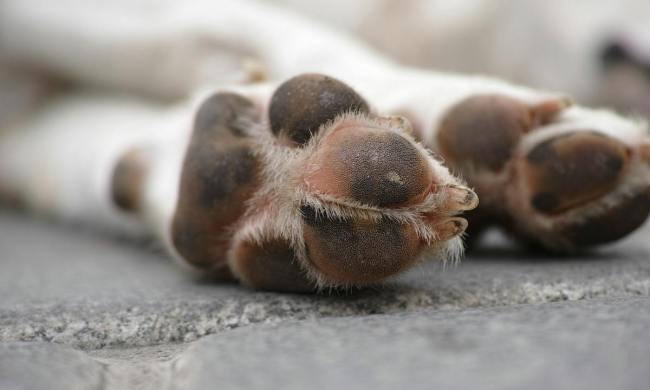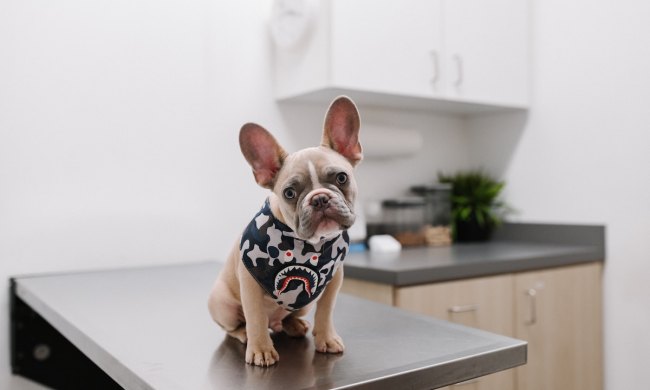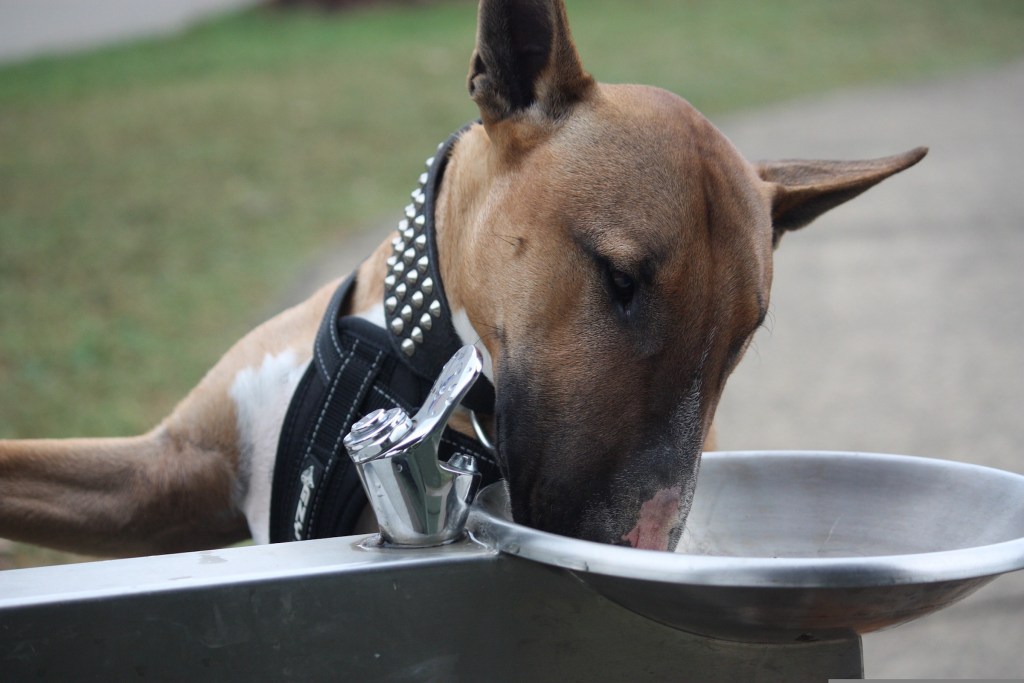
Ensuring your furry best friend gets plenty of water is one of the most important parts of being a pet parent. But how much water should your dog drink on a daily basis? Veterinarians claim the general rule of thumb is a simple equation: The majority of dogs require around 1/2 to 1 ounce (about 1/8 of a cup) of water per pound of body weight each day. Don’t want to reach for your measuring cup? Make sure your pup has round-the-clock access to clean water, and everything should be fine.
That being said, if your dog empties their water bowl several times a day, or you notice their intake has increased drastically, you should probably keep a close eye on things. If your dog drinks a lot of water, you may be wondering, “Why is my dog always thirsty?” We’ll share how to monitor your pup’s water intake, the most common reasons your dog may be thirsty, and when you should speak with your vet.
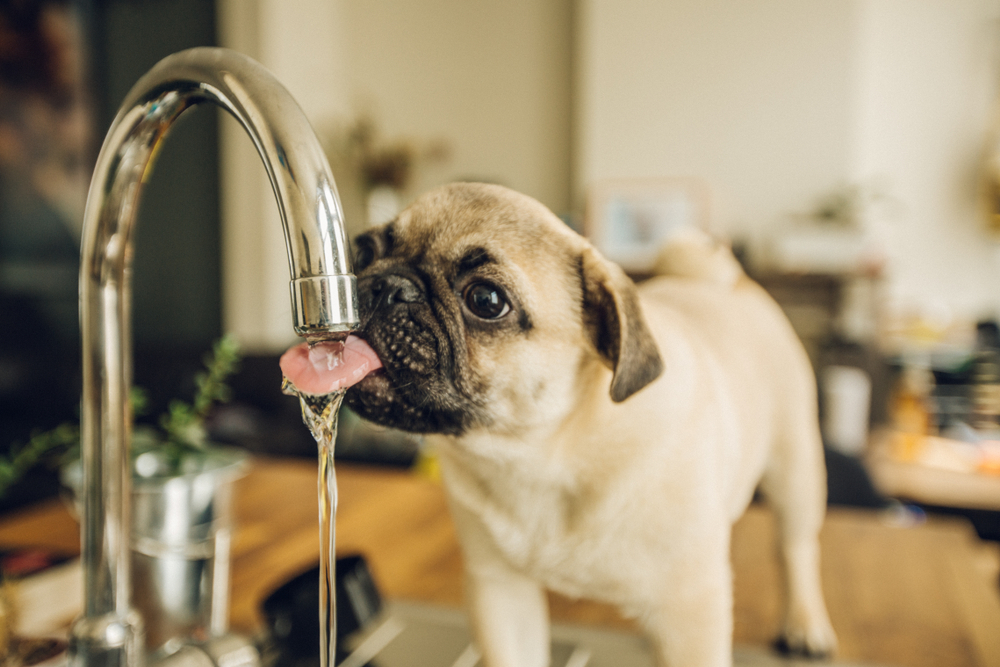
Why do some dogs drink a lot of water?
It’s mainly due to their size. According to the Halifax Humane Society, a 65-pound dog should drink approximately 33 to 65 ounces a day, but if your pooch gets some of this liquid from food, they may not want to drink as much water directly from their bowl. If you’re concerned your dog might not be getting the right amount of water each day, try measuring it out before you pour it into their bowl, so you can gauge exactly how much water they drink each day.
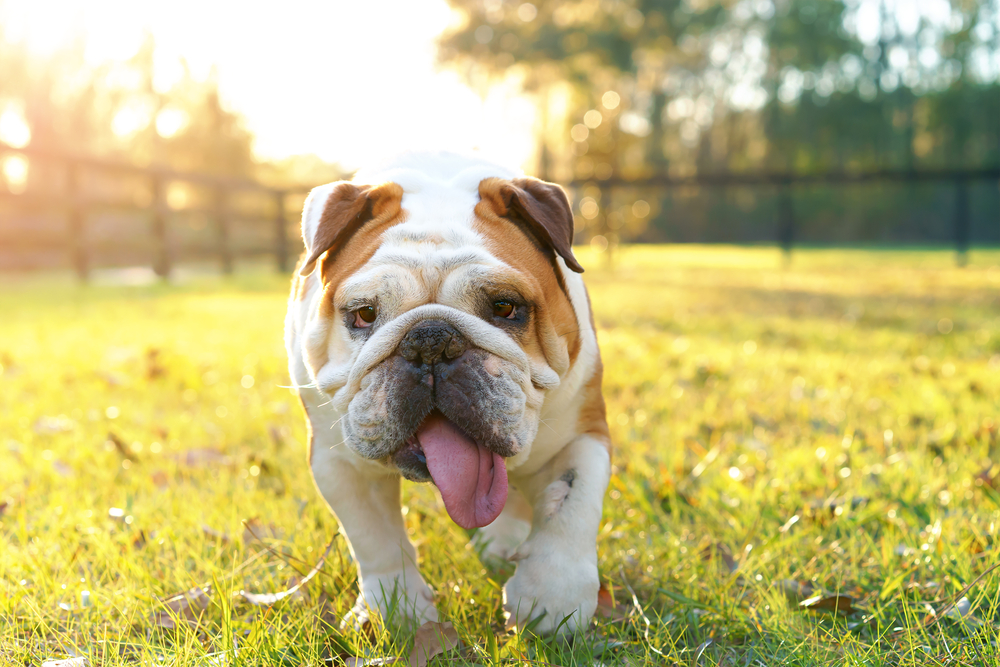
What are dog dehydration symptoms?
When you take your little guy to the vet, they likely check your dog’s hydration level with the skin tent method, meaning they pinch the skin on their back and watch it return to normal. If your buddy is properly hydrated, this should happen almost instantly. We don’t recommend messing with their skin all the time, but if you spot other signs, you might want to try it out. Those other symptoms include:
- Dry mouth and nose
- Thick saliva
- Unusually low energy
- Loss of appetite
- Sunken eyes
- Excessive panting
While any one of these could mean nothing on its own, taken together, you have pretty good evidence that your animal’s experiencing dehydration.
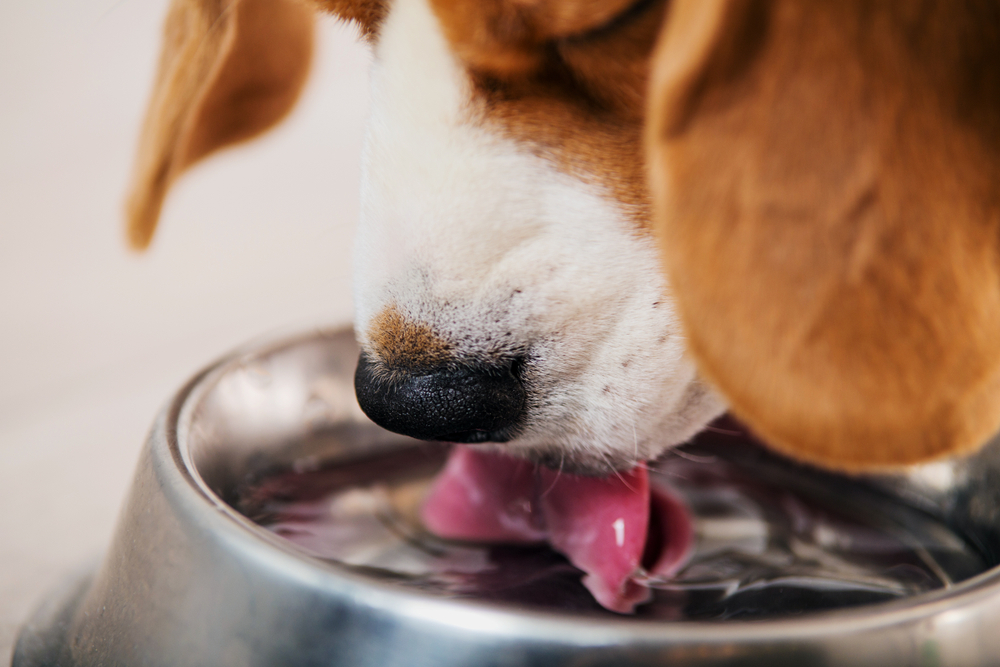
Why is my dog always thirsty?
There’s no need to fear if your dog suddenly drinks more than usual. Dogs tend to dehydrate faster during warmer weather, so if your pup guzzles every last drop of water in mid-July, it’s most likely because they overheated during the afternoon walk. Similarly, if your pooch has stepped up their activity recently, their water intake will most likely increase to match their new fitness level.
You should always take precautions with your dog when the temperatures climb. Dehydration can easily become life-threatening, so we don’t recommend leaving your pup outside for long periods. Try going for walks during the coolest part of the day and save the strenuous exercise for when the heat’s less intense.
Medications can affect thirst
Some medications have side effects like dry mouth, dehydration, and excessive thirst. If your pooch is taking prednisone for asthma or allergies, that could be the reason why they’re drinking so much more water lately. Furosemide, a drug used to treat heart failure, can cause increased urination, which means your dog will be thirstier to make up for losing so much fluid. Lastly, certain seizure medications can cause a spike in appetite, thirst, and urine output, so if your pooch is on medication, make sure you have an in-depth discussion about potential side effects with your veterinarian.
Consider your dog’s diet
Dry dog food contains little water, often 10% or less. Dogs who exclusively eats dry kibble may experience excessive thirst compared to dogs who eat a diet rich in moisture. You’ll also want to check the sodium content of your pooch’s food and try not to give your dog table scraps, no matter how much they beg. Too much sodium not only causes excessive thirst, but it can also make your dog seriously ill.
If you think your pooch might have had too many table scraps lately, look for symptoms like vomiting and diarrhea in addition to increased water intake. While it’s rare for anyone to feed their dogs enough sodium to make them sick, a trip to the vet is in order if it happens.
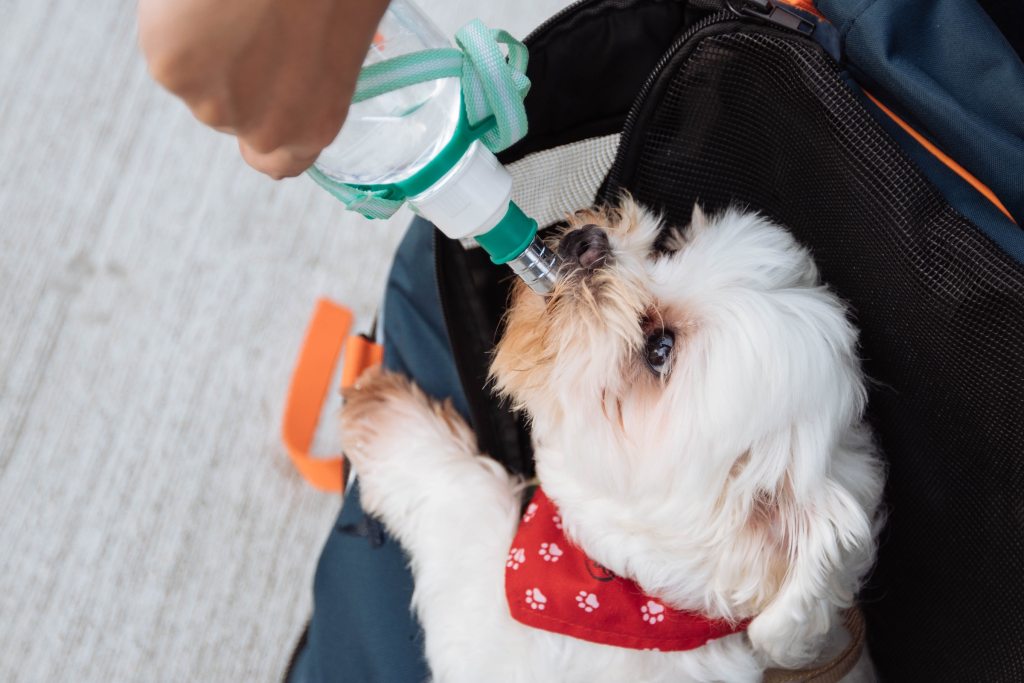
When is excessive drinking a cause for concern?
If your dog suddenly begins to drink in excess while the weather and their activity level remain constant, it’s probably time for a quick trip to the vet for a few tests. It’s possible your dog is thirstier than usual for a perfectly benign reason, but it’s always better to be safe than sorry when it comes to the health of your fur babies. Keep your dog’s bowl filled, and if you think they’re drinking more than usual, it helps to measure and write down how much you add to the water bowl each time.
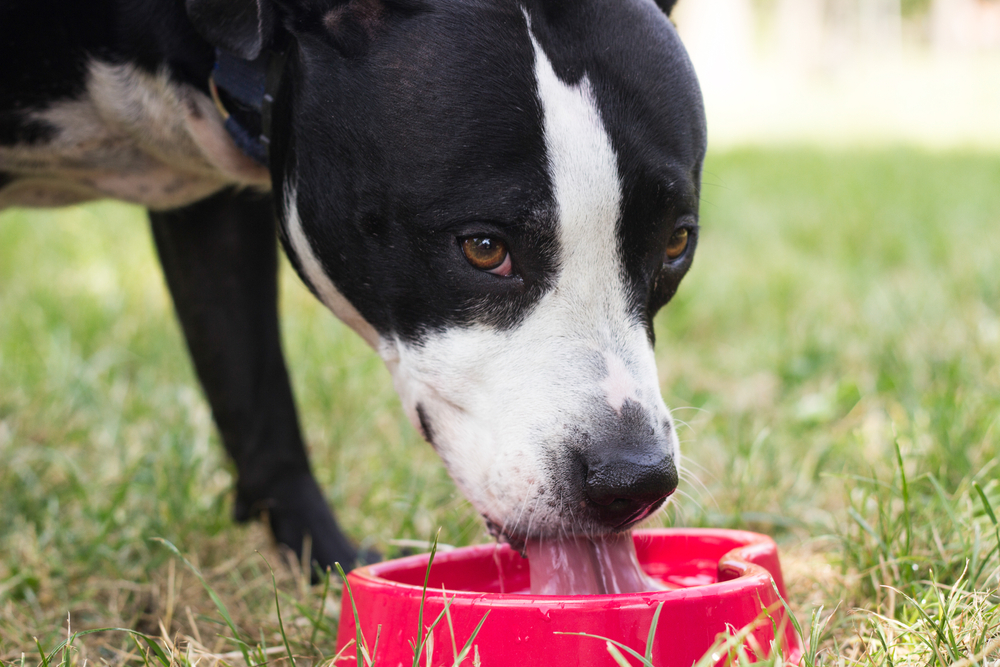
What conditions can lead to excess thirst?
Don’t worry, most of the time, your pup’s drinking habits have everything to do with how dry your house gets and nothing to do with a scary underlying condition. However, your vet might run some tests if the water drinking gets out of hand. This will probably look like an exam, blood work, and a urine test. Your animal’s pee has a big story to tell here since it reflects their water intake pretty well.
The increased thirst could wind up stemming from something really basic, like a thyroid problem, or nothing at all. However, some serious conditions do often change drinking habits, including kidney disease, cancer, diabetes, infections, and liver disease. Hopefully, it’s not one of these illnesses but best to rule them out no matter what.
Your dog’s health is important to you, and you want your furry friend to live a long and happy life. By learning your pet’s routines, how much they usually eat and drink, and monitoring their urine output, you’ll be a step ahead of the game if something changes. Even if your dog looks fine, and the only difference is the amount of water they drink, don’t be afraid to contact your vet. If you stay on top of your dog’s case, you might be able to catch a problem before it becomes serious.

